RCS Estimation of Singly Curved Dielectric Shell Structure with PMCHWT Method and Experimental Verification
Abstract
:1. Introduction
2. PMCHWT Formulation
3. Monostatic RCS Measurement
4. Results and Discussion
4.1. MoM Solution of Canonical Structure
4.2. MoM Solution of a Singly Curved Dielectric Shell
4.3. Monostatic RCS Measurement of a Singly Curved Dielectric Shell
5. Conclusions
Author Contributions
Funding
Data Availability Statement
Acknowledgments
Conflicts of Interest
References
- Sevgi, L.; Rafiq, Z.; Majid, I. Radar cross section (RCS) measurements [Testing ourselves]. IEEE Antennas Propag. Mag. 2013, 55, 277–291. [Google Scholar] [CrossRef]
- Ma, C.; Wen, Y.; Zhang, J. A Fast, Hybrid, Time-Domain Discontinuous Galerkin-Physical Optics Method for Composite Electromagnetic Scattering Analysis. Appl. Sci. 2021, 11, 2694. [Google Scholar] [CrossRef]
- Pons, A.; Somolinos, A.; González, I.; Cátedra, F. Fast Computation by MLFMM-FFT with NURBS in Large Volumetric Dielectric Structures. Electronics 2021, 10, 1560. [Google Scholar] [CrossRef]
- Sanchez-Olivares, P.; Lozano, L.; Somolinos, Á.; Cátedra, F. EM Modelling of Monostatic RCS for Different Complex Targets in the Near-Field Range: Experimental Evaluation for Traffic Applications. Electronics 2020, 9, 1890. [Google Scholar] [CrossRef]
- Ylä-Oijala, P.; Taskinen, M.; Järvenpää, S. Analysis of surface integral equations in electromagnetic scattering and radiation problems. Eng. Anal. Bound. Elem. 2008, 32, 196–209. [Google Scholar] [CrossRef]
- Jung, B.H.; Sarkar, T.K.; Ting, S.W.; Zhang, Y.; Mei, Z.; Ji, Z.; Yuan, M.; De, A.; Salazar-Palma, M.; Rao, S.M. Time and Frequency Domain Solutions of EM Problems: Using Integral Equations and a Hybrid Methodology; John Wiley and Sons: Hoboken, NJ, USA, 2011. [Google Scholar]
- Rao, S.; Wilton, D.; Glisson, A. Electromagnetic scattering by surfaces of arbitrary shape. IEEE Trans. Antennas Propag. 1982, 30, 409–418. [Google Scholar] [CrossRef] [Green Version]
- Yla-Oijala, P.; Markkanen, J.; Jarvenpaa, S.; Kiminki, S.P. Surface and volume integral equation methods for time-harmonic solutions of Maxwell’s equations. Prog. Electromagn. Res. 2014, 149, 15–44. [Google Scholar] [CrossRef] [Green Version]
- Gu, J.; He, Z. Electromagnetic modeling for FSS with anisotropic substrate by using a hybrid-accelerated VSIE method. Eng. Anal. Bound. Elem. 2020, 113, 110–117. [Google Scholar] [CrossRef]
- Liu, Y.Y.; Zhu, M.D.; Zhai, C.; Hou, P.; Zhang, Y. Matrix-Partitioned DDM for the Accurate Analysis of Challenging Scattering Problems. IEEE Access 2020, 8, 140661–140672. [Google Scholar] [CrossRef]
- Gibson, W.C. The Method of Moments in Electromagnetics; Chapman and Hall/CRC: Boca Raton, FL, USA, 2021. [Google Scholar]
- Prakash, V.; Mittra, R. Characteristic basis function method: A new technique for efficient solution of method of moments matrix equations. Microw. Opt. Technol. Lett. 2003, 36, 95–100. [Google Scholar] [CrossRef]
- Park, C.S.; Hong, I.P.; Kim, Y.J.; Yook, J.G. Acceleration of Multilevel Characteristic Basis Function Method by Multilevel Multipole Approach. IEEE Trans. Antennas Propag. 2020, 68, 7109–7120. [Google Scholar] [CrossRef]
- Kleanthous, A.; Betcke, T.; Hewett, D.P.; Scroggs, M.W.; Baran, A.J. Calderón preconditioning of PMCHWT boundary integral equations for scattering by multiple absorbing dielectric particles. J. Quant. Spectrosc. Radiat. Transf. 2019, 224, 383–395. [Google Scholar] [CrossRef] [Green Version]
- Cools, K.; Andriulli, F.P.; Michielssen, E. A Calderón multiplicative preconditioner for the PMCHWT integral equation. IEEE Trans. Antennas Propag. 2011, 59, 4579–4587. [Google Scholar] [CrossRef]
- Thomas, P.; Abdulhakim, L.V.; Pushkaran, N.K.; Karuvandi, A.C. Wideband Radar Absorbing Structure Using Polyaniline-Graphene Nanocomposite. C 2020, 6, 72. [Google Scholar] [CrossRef]
- Lee, I.G.; Yoon, Y.J.; Choi, K.S.; Hong, I.P. Design of an Optical Transparent Absorber and Defect Diagnostics Analysis Based on Near-Field Measurement. Sensors 2021, 21, 3076. [Google Scholar] [CrossRef] [PubMed]
- Li, J.; Xu, T.; Liu, L.; Hong, Y.; Song, Z.; Bai, H.; Zhou, Z. Microstructure, magnetic and low-frequency microwave absorption properties of doped Co–Ti hexagonal barium ferrite nanoparticles. Ceram. Int. 2021, 47, 19247–19253. [Google Scholar] [CrossRef]
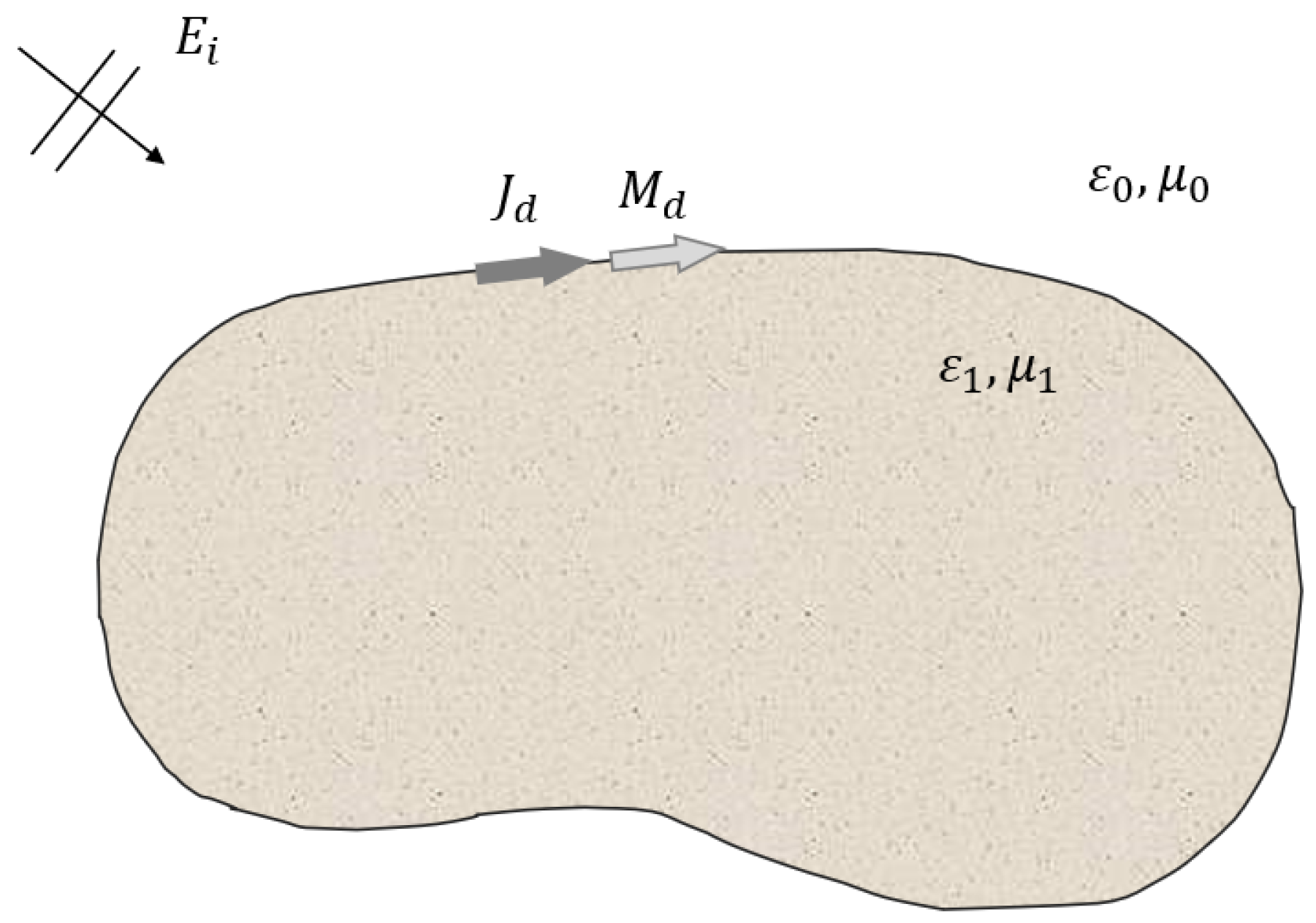
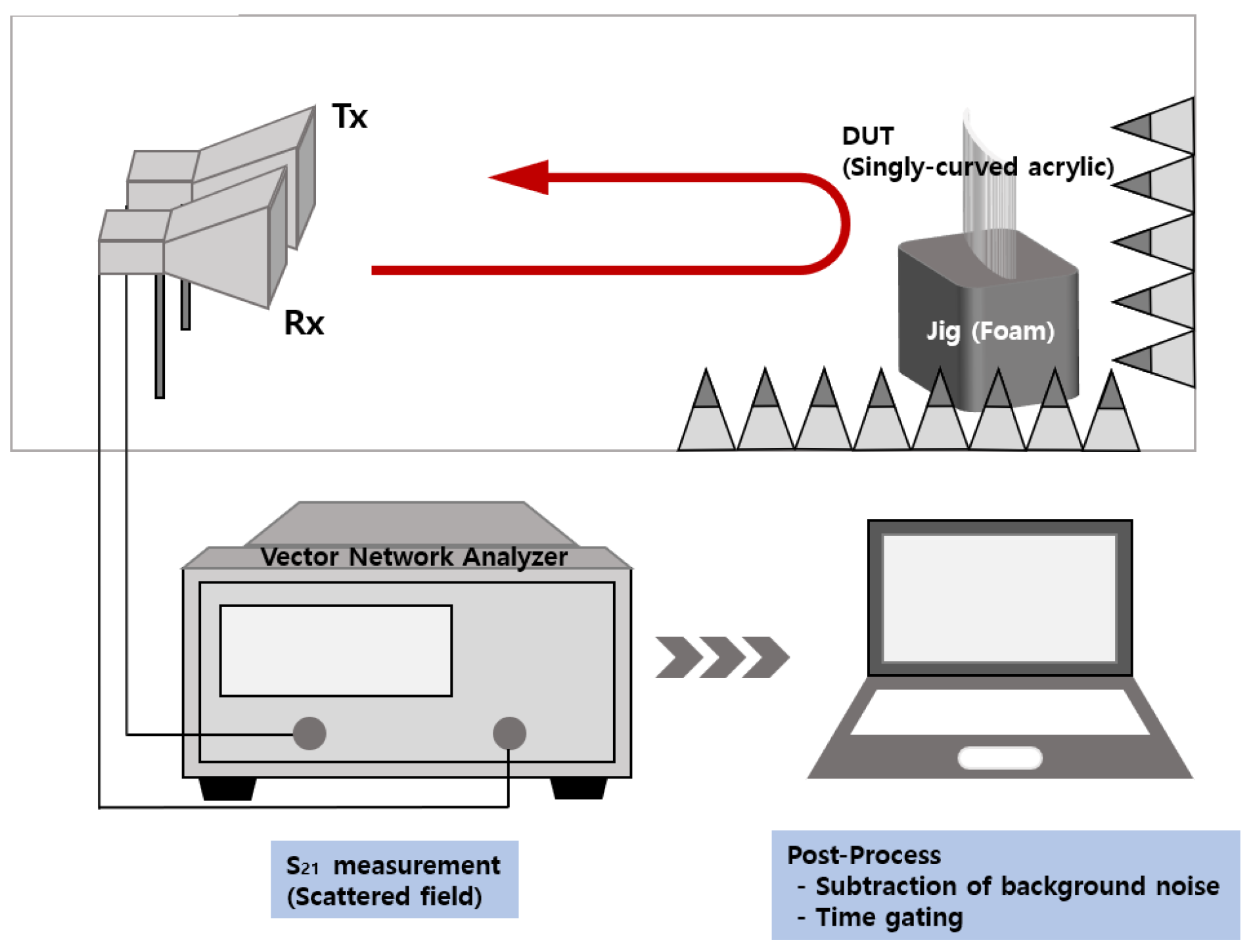
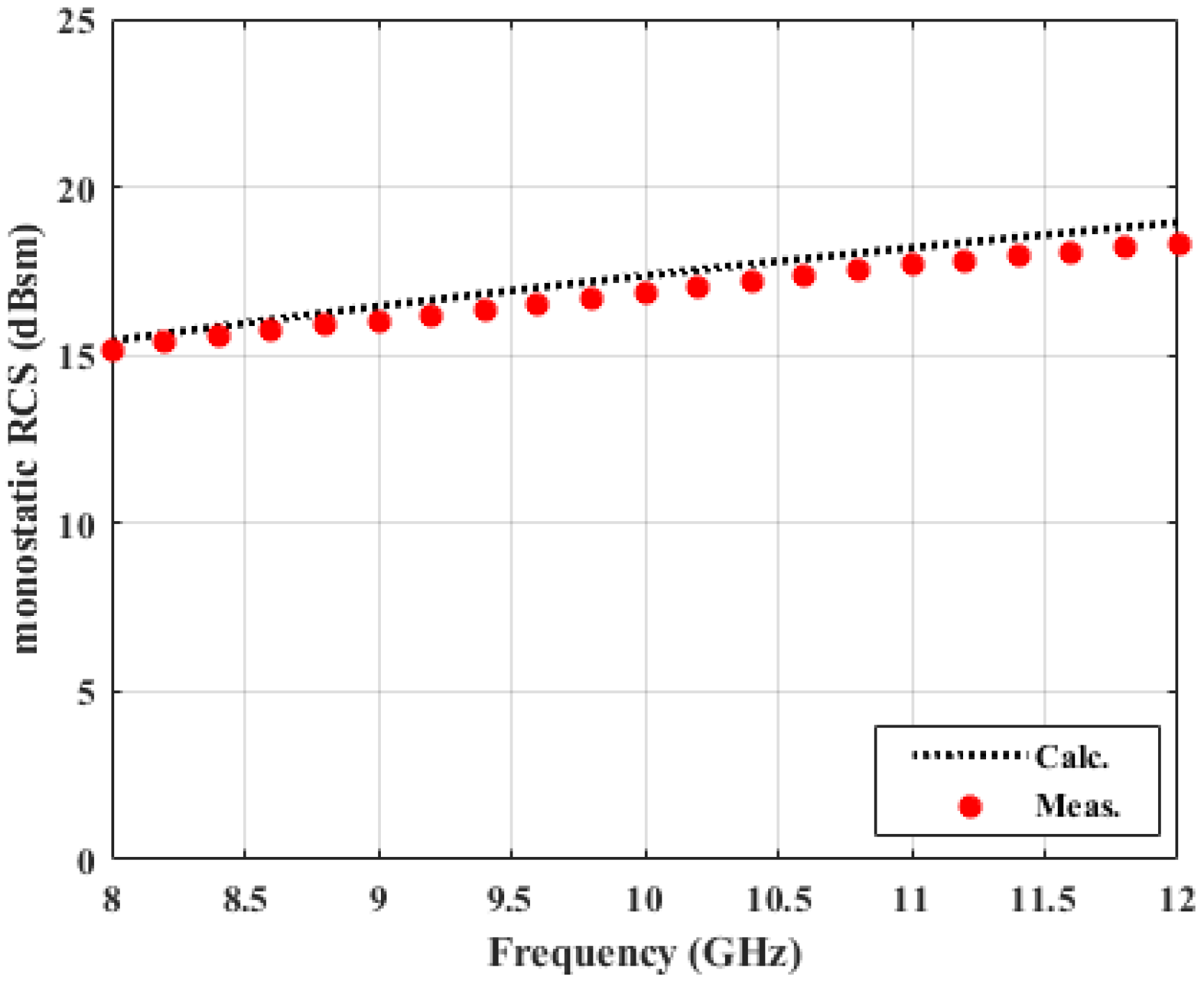

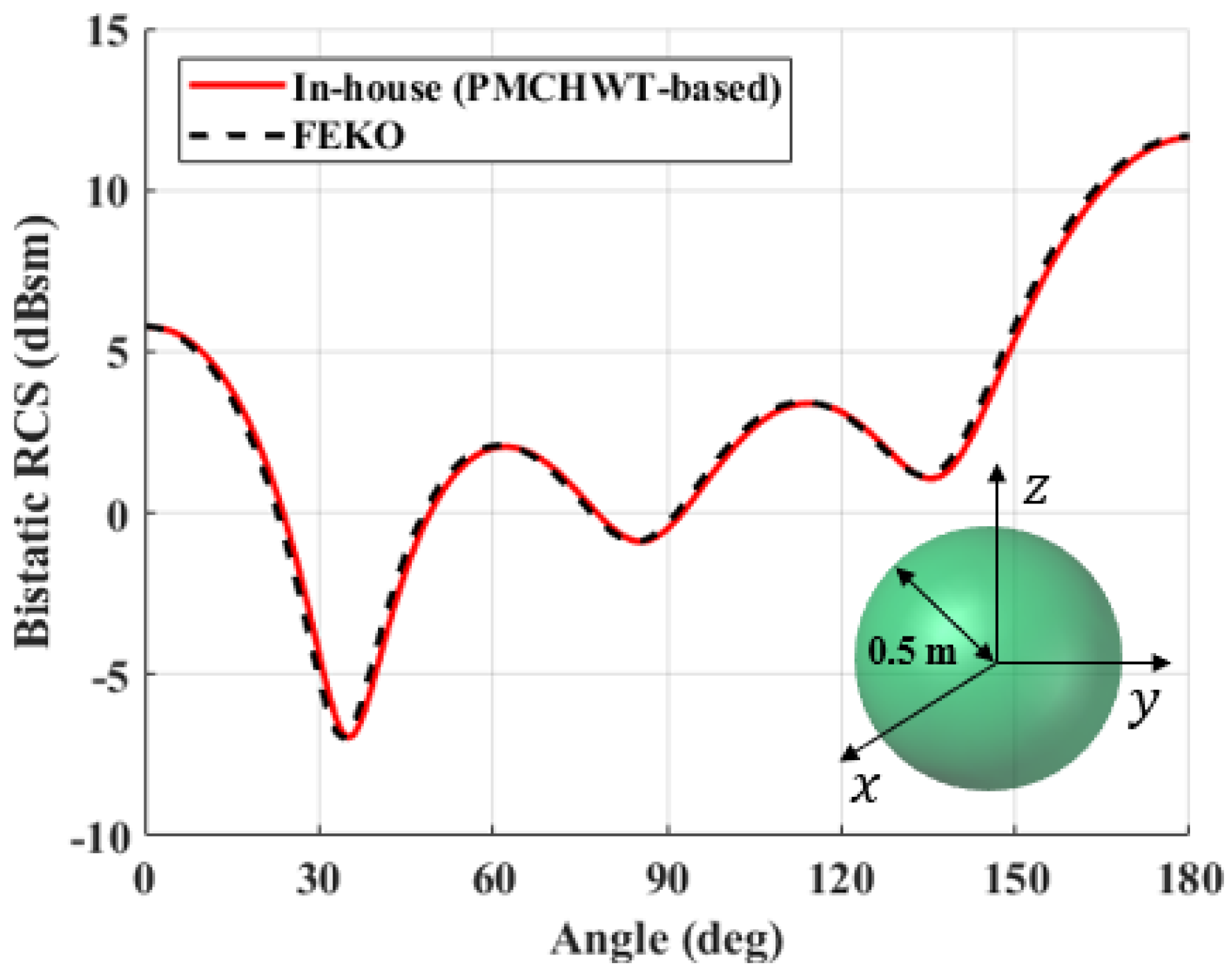
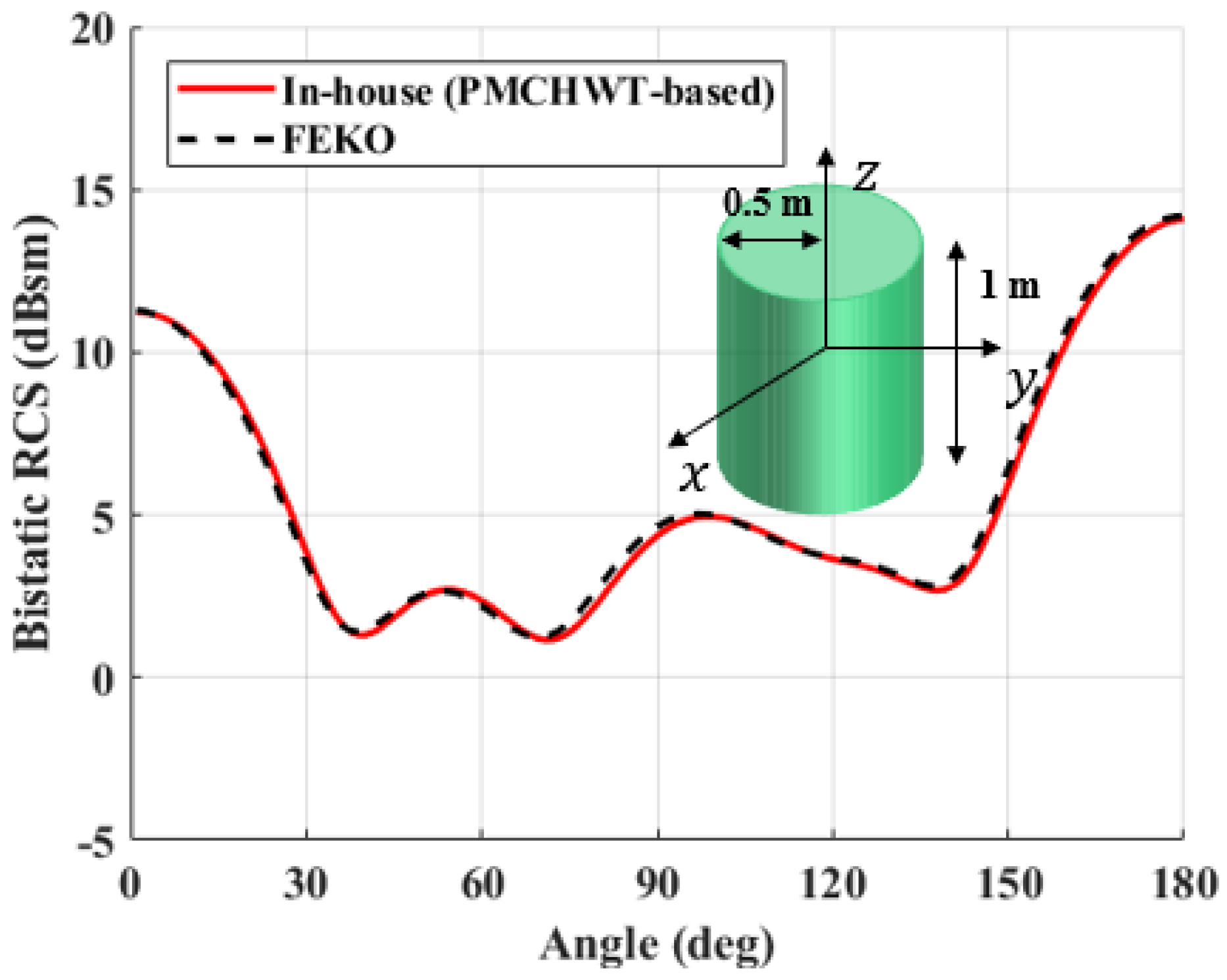
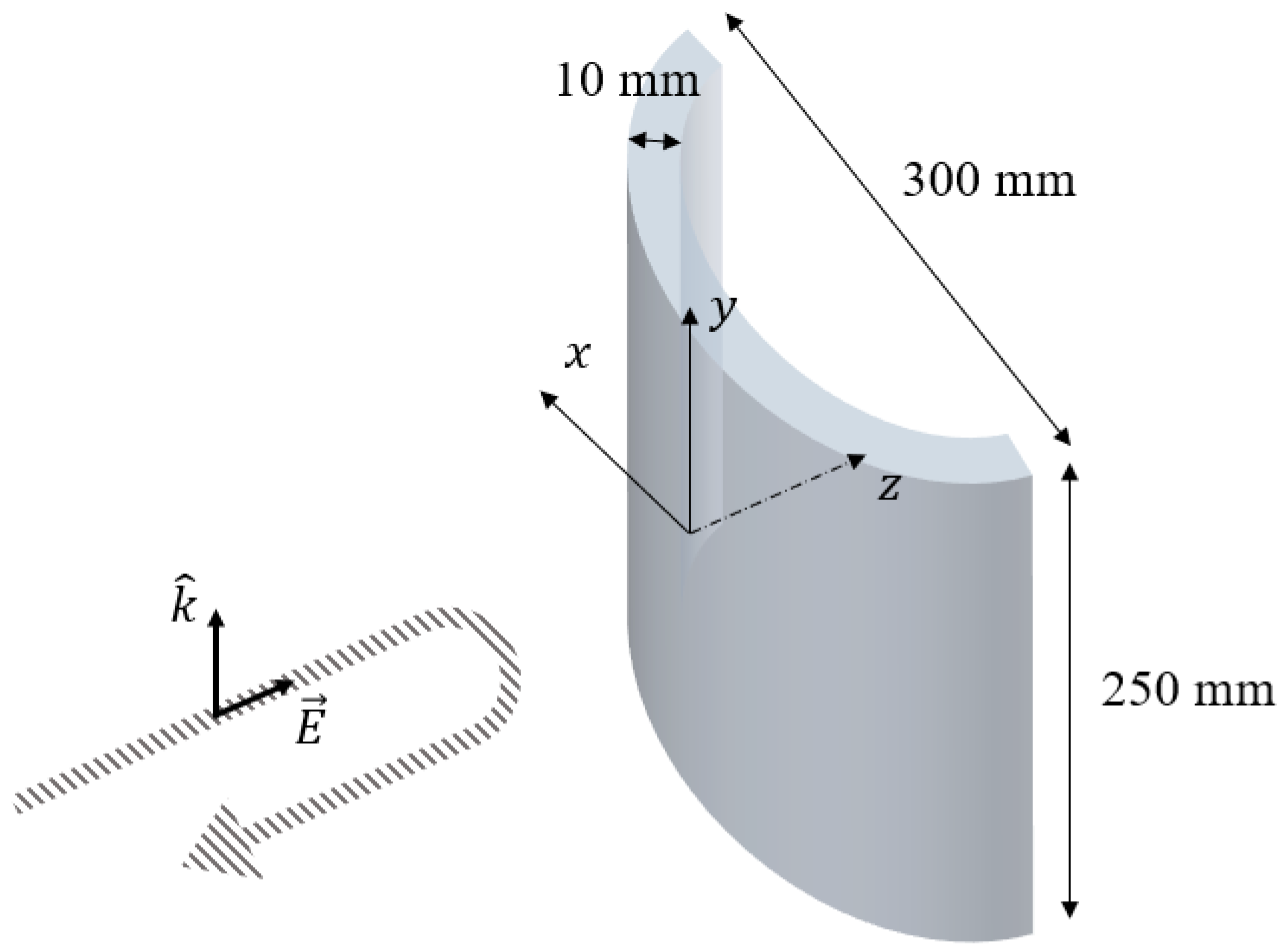
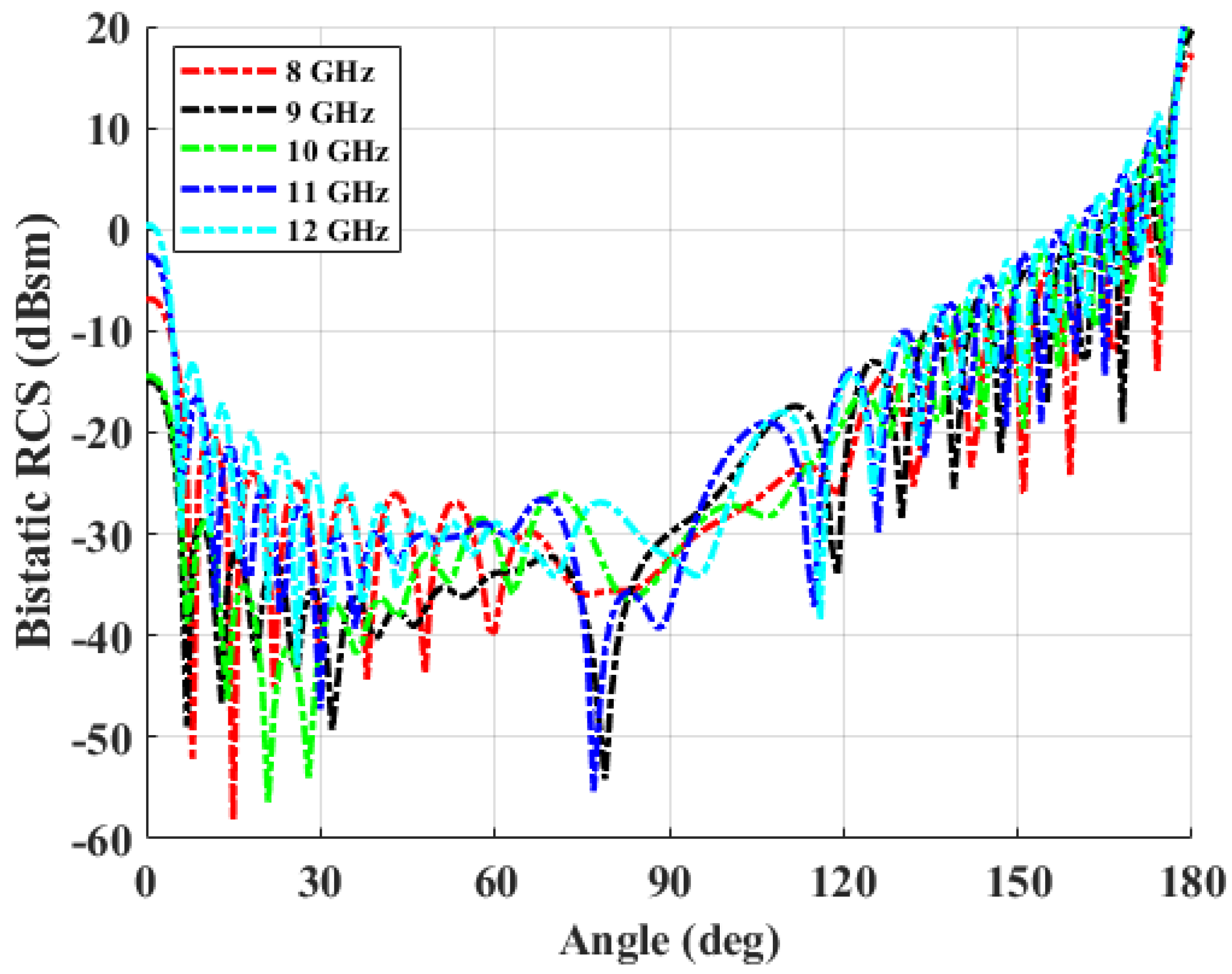

Publisher’s Note: MDPI stays neutral with regard to jurisdictional claims in published maps and institutional affiliations. |
© 2022 by the authors. Licensee MDPI, Basel, Switzerland. This article is an open access article distributed under the terms and conditions of the Creative Commons Attribution (CC BY) license (https://creativecommons.org/licenses/by/4.0/).
Share and Cite
Im, H.-R.; Kim, W.; Noh, Y.-H.; Hong, I.-P.; Yook, J.-G. RCS Estimation of Singly Curved Dielectric Shell Structure with PMCHWT Method and Experimental Verification. Sensors 2022, 22, 734. https://doi.org/10.3390/s22030734
Im H-R, Kim W, Noh Y-H, Hong I-P, Yook J-G. RCS Estimation of Singly Curved Dielectric Shell Structure with PMCHWT Method and Experimental Verification. Sensors. 2022; 22(3):734. https://doi.org/10.3390/s22030734
Chicago/Turabian StyleIm, Hyeong-Rae, Woobin Kim, Yeong-Hoon Noh, Ic-Pyo Hong, and Jong-Gwan Yook. 2022. "RCS Estimation of Singly Curved Dielectric Shell Structure with PMCHWT Method and Experimental Verification" Sensors 22, no. 3: 734. https://doi.org/10.3390/s22030734
APA StyleIm, H.-R., Kim, W., Noh, Y.-H., Hong, I.-P., & Yook, J.-G. (2022). RCS Estimation of Singly Curved Dielectric Shell Structure with PMCHWT Method and Experimental Verification. Sensors, 22(3), 734. https://doi.org/10.3390/s22030734





